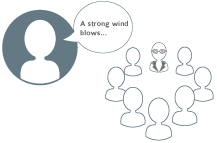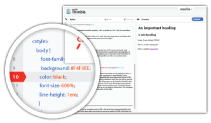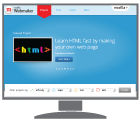

<html>, <head>, <title>, <body>, <h1>,<h2>, etc, <p>, <ul> & <ol>, <li>, <img>, <a>
In the identity jam my participants will learn about the open web, HTML and CSS by making their own web pages, swapping images, closing broken tags and creating pages for their alter egos.



When they're finished with their reviews, ask them what next steps would be for each project. How can each project be iterated and improved upon?